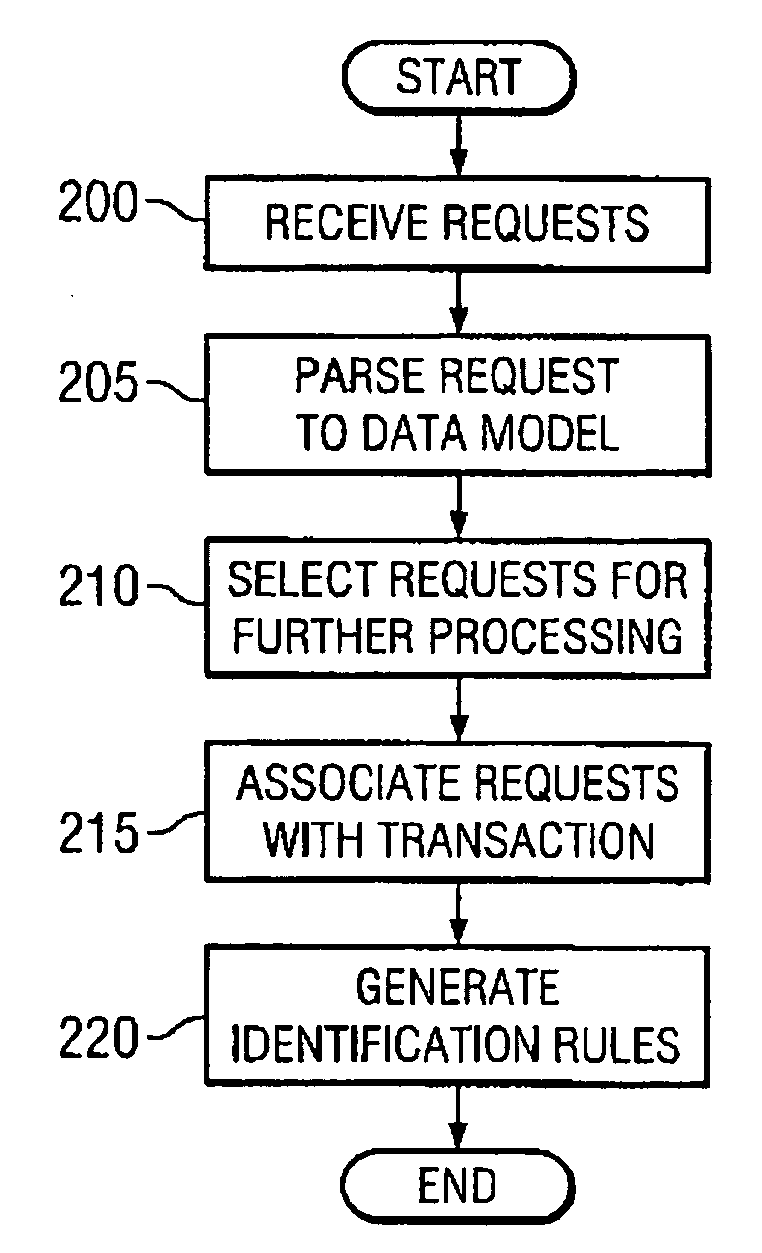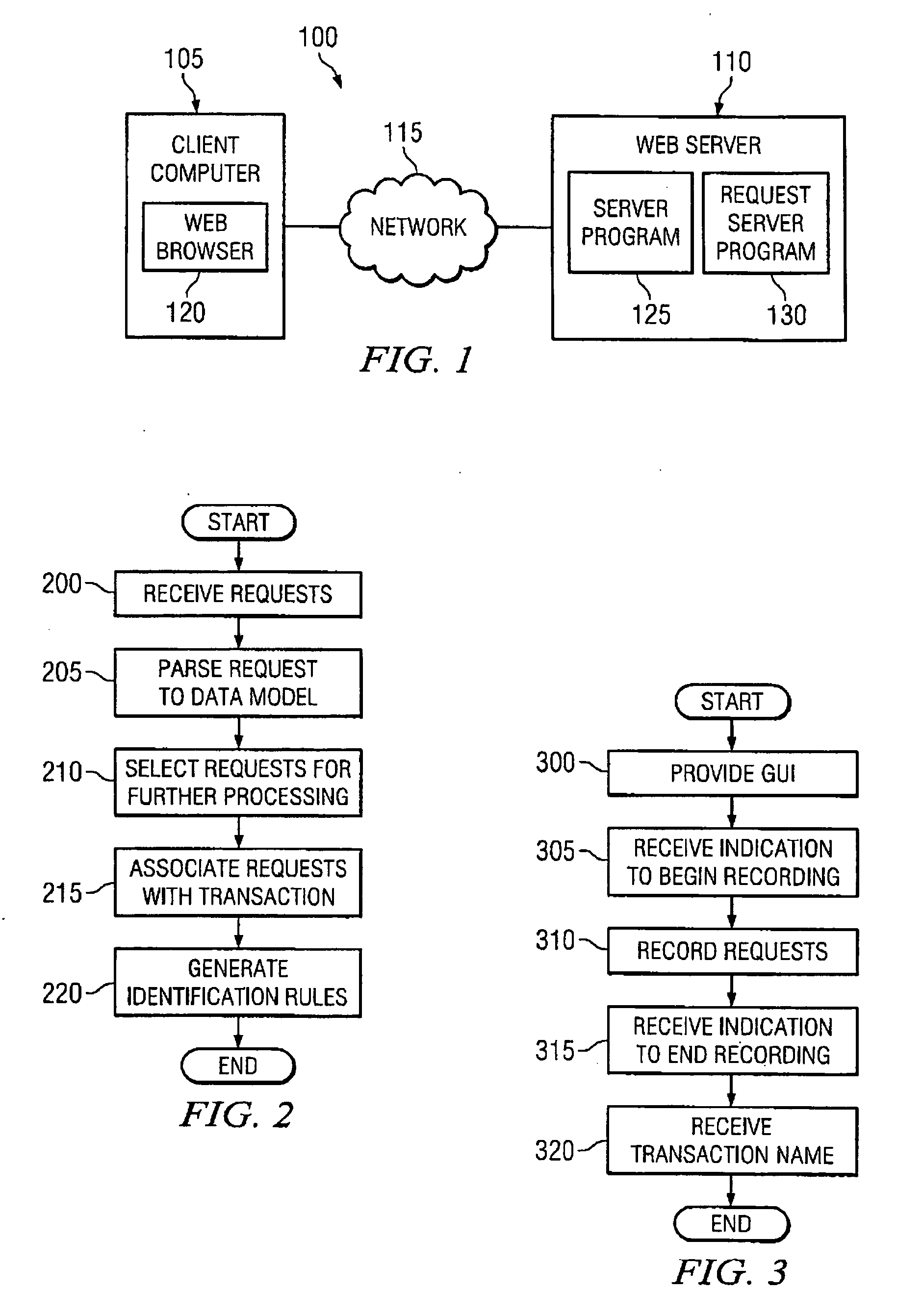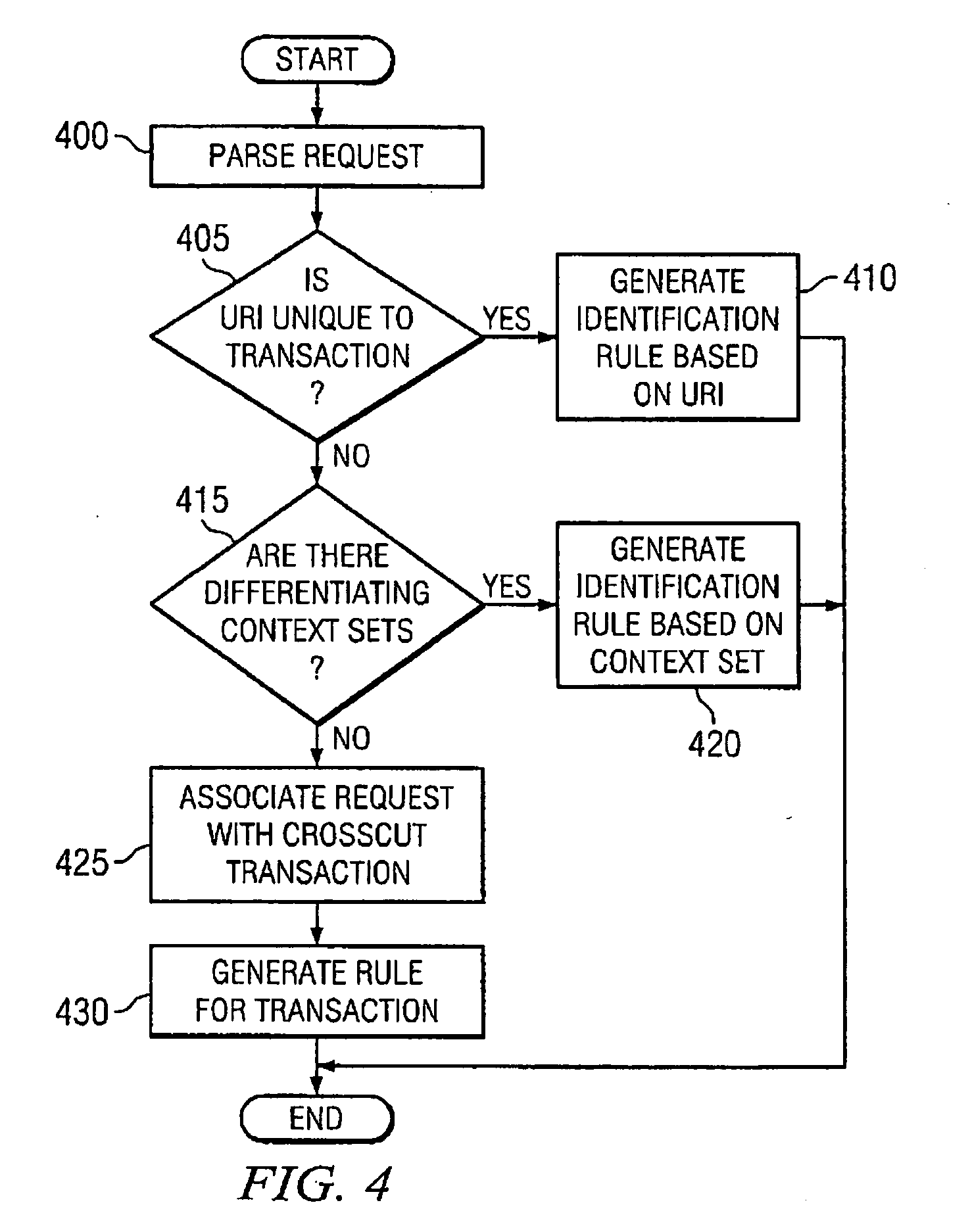System and method for classifying requests
- Summary
- Abstract
- Description
- Claims
- Application Information
AI Technical Summary
Benefits of technology
Problems solved by technology
Method used
Image
Examples
Embodiment Construction
[0019]Preferred embodiments of the present invention are illustrated in the FIGUREs, like numerals being used to refer to like and corresponding parts of the various drawings.
[0020]A “transaction”, for purposes of this disclosure, is a defined class to which a request corresponds. Broadly speaking, embodiments of the present invention generate identification rules to classify requests as corresponding to particular transactions. Embodiments of the present invention examine a set of sample requests, determine patterns in the sample requests and generate identification rules based on the request patterns to classify subsequent requests as corresponding to particular transactions. As more sample requests are processed, embodiments of the present invention can update the identification rules. Put another way, embodiments of the present invention can automatically learn how to classify requests more accurately as more requests are processed.
[0021]FIG. 1 is a diagrammatic representation o...
PUM
 Login to View More
Login to View More Abstract
Description
Claims
Application Information
 Login to View More
Login to View More - R&D
- Intellectual Property
- Life Sciences
- Materials
- Tech Scout
- Unparalleled Data Quality
- Higher Quality Content
- 60% Fewer Hallucinations
Browse by: Latest US Patents, China's latest patents, Technical Efficacy Thesaurus, Application Domain, Technology Topic, Popular Technical Reports.
© 2025 PatSnap. All rights reserved.Legal|Privacy policy|Modern Slavery Act Transparency Statement|Sitemap|About US| Contact US: help@patsnap.com



